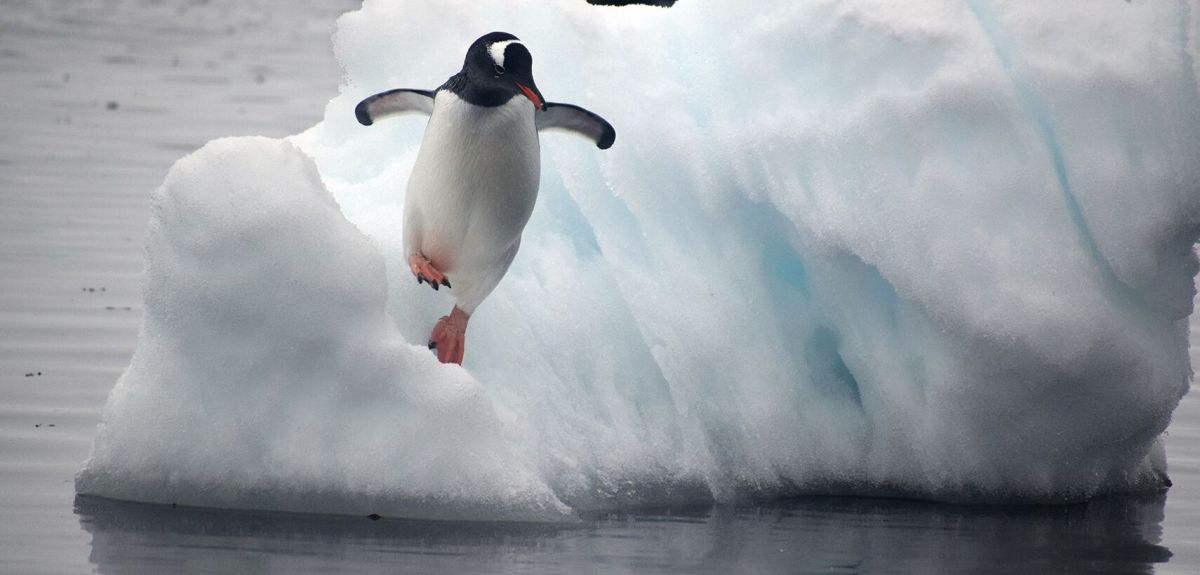
Image courtesy of Kelton McMahon.
Study reveals climate change impact on Antarctic penguins
Antarctic penguins have been on the forefront of climate change, experiencing massive changes to their natural habitat as the world’s temperatures and human activity in the region have increased. Now, new research has revealed how penguins have dealt with more than a century of human impacts in Antarctica and why some species are winners or losers in this rapidly changing ecosystem.
Researchers from the University of Oxford, Louisiana State University, University of Rhode Island, University of California Santa Cruz, and the University of Saskatchewan have studied penguin populations with the goal of understanding how human interference in Antarctic ecosystems during the past century led to booms and busts in the availability of a key food source for penguins: Antarctic krill.
‘Antarctic krill is a shrimp-like crustacean that is a key food source for penguins, seals, and whales. When seal and whale populations dwindled due to historic over-harvesting, it is thought to have led to a surplus of krill during the early to mid-1900s. In more recent times, the combined effects of commercial krill fishing, anthropogenic climate change, and the recovery of seal and whale populations are thought to have drastically decreased the abundance of krill,’ says Michael Polito, co-lead author and assistant professor in Louisiana State University’s Department of Oceanography & Coastal Sciences.
In this study, the team focused on the diets of chinstrap and gentoo penguins by analyzing the nitrogen stable isotope values of amino acids, which acts as a chemical signal of what the penguin has eaten, in penguin feathers collected during explorations of the Antarctic Peninsula during the past century. The findings were published today in the Proceedings of the National Academy of Sciences.
‘Given that gentoo penguins are commonly thought of as climate change winners and chinstrap penguins as climate change losers we wanted to investigate how differences in their diets may have allow one species to cope with a changing food supply while the other could not,’ said Tom Hart, co-author and penguinologist at the Department of Zoology, University of Oxford. ‘We wanted to understand why chinstrap penguins have had severe population declines, while gentoo penguin populations have increased in the Antarctic Peninsula over the past half century.’
The team found that both penguin species primarily fed on krill during the krill surplus in the early to mid-1900s that was caused by seal and whale harvesting. In contrast, during the latter half of the past century, gentoo penguins increasingly showed an adaptive shift from strictly eating krill to including fish and squid in their diets, unlike the chinstrap penguins that continued to feed exclusively on krill.
‘Our results indicate that historic marine mammal harvesting and recent climate change have altered the Antarctic marine food web over the past century. Moreover, the differing diet and population responses we observed in penguins indicate that species such as chinstrap penguins, with specialized diets and a strong reliance on krill, will likely continue to do poorly as climate change and other human impacts intensify,’ says Kelton McMahon, co-lead author and assistant professor at the University of Rhode Island.
The authors predict that the Antarctic Peninsula region will remain a hotspot for climate change and human impacts during the next century, and they believe their research will be beneficial in predicting which species are likely to fare poorly and which will withstand—or even benefit from—future changes.
According to McMahon, ‘By understanding how past ecosystems respond to environmental change, we can better predict future responses to better manage human-environment interactions in Antarctica.’
 Oxford researchers urge reforms to improve global wildlife trade regulation as CITES turns 50
Oxford researchers urge reforms to improve global wildlife trade regulation as CITES turns 50
 Expert Comment: How is generative AI transforming the labour market?
Expert Comment: How is generative AI transforming the labour market?
 Professor Sir Nigel Shadbolt appointed to the UK Government’s Council for Science and Technology
Professor Sir Nigel Shadbolt appointed to the UK Government’s Council for Science and Technology
 Early support for children living in marginalised communities can improve developmental outcomes
Early support for children living in marginalised communities can improve developmental outcomes
 Researchers develop new method to identify fake Covid-19 vaccines
Researchers develop new method to identify fake Covid-19 vaccines